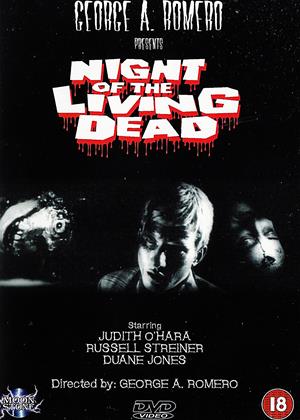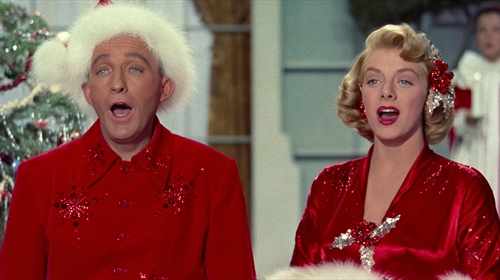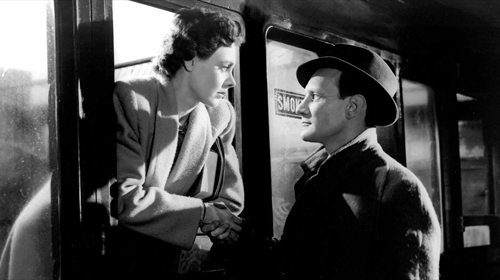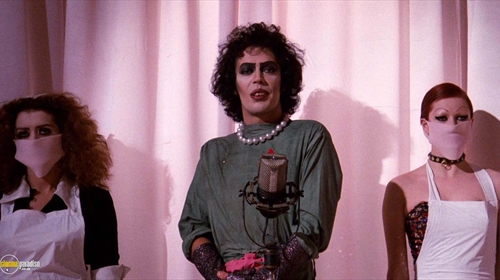John Carpenter's Halloween (1978) wasn't the first slasher. It had been preceded by Alfred Hitchcock's Psycho (1960), Theodore Gershuny's Silent Night, Bloody Night (1972), Tobe Hooper's The Texas Chain Saw Massacre (1974) and Bob Clark's Black Christmas (1974), as well as a number of Italian giallo thrillers. But it set the rules for the gory revival of the horror genre, with such figures as the masked serial killer, the imperilled teen and the 'final girl' all becoming recurring tropes during a golden age that coincided with the rise of the 'video nasty'.

It has inspired eight sequels, as well as a 2007 remake and its follow-up and a 2018 stand-alone sequel that is set to spawn two more additions to the canon over the next couple of years. In total, the Halloween series has amassed $640 million at the box office and is the most successful horror strand in screen history. Yet, as director John Carpenter told The Hollywood Reporter, he had simply set out to make 'a little horror movie'. What caught the imagination, however, was the murderous stalker in a mask who didn't seem altogether human. 'He was just pure evil.' Carpenter claimed. 'That was what I intended to do. It's evil out of nothing, evil from no background, which completely creeps me out as a human being, that evil could arrive at my doorstep without a purpose, without a past, without an origin. So that's the idea behind it. It was put together to scare you.'
Every Town Has a Secret
John Carpenter was working on a teleplay entitled Someone's Watching Me! (1978) when he was approached by producer Irwin Yablans with an idea for a movie about a small-town maniac menacing a babysitter. A film fan since childhood, who counted John Ford and Howard Hawks among his heroes, Carpenter had been making 8mm horror shorts since he was a teenager. Indeed, while he was studying the University of Southern California's School of Cinematic Arts, Carpenter had made Captain Voyeur (1969), which was prefaced by a quotation that was attributed to 'O.Froats, from “a discussion,” 1st stall, men's room, Abby Theater': 'I wish I could see...I want to break the illusion and watch you in your quiet hours, when the mask is off...and when I put my mask on,'
Having quit USC to work on his own projects, Carpenter had co-written, edited and scored John Longenecker's The Resurrection of Bronco Billy (1970), which won the Academy Award for Best Live-Action Short. He had followed this by making his feature bow with Dark Star (1974), which he had co-scripted with Dan O'Bannon. The cult success of this parody of Stanley Kubrick's 2001: A Space Odyssey (1968) led to a chance to make Assault on Precinct 13 (1976), an urban reworking of Howard Hawks's Western, Rio Bravo (1958), which Carpenter acknowledged by taking the editor credit of John T. Chance, which was the name of John Wayne's character in the film.
This classic example of indie exploitation resulted in Carpenter having his script for a thriller entitled Eyes being bought by Columbia Pictures and reshaped into Irvin Kershner's Eyes of Laura Mars (1978), which starred Faye Dunaway and Tommy Lee Jones. So, he was well versed in sending shivers when Yablans and financier Moustapha Akkad sought him out to launch their new company, Compass. In addition to demanding his name above the title and final cut, Carpenter also secured a $10,000 fee and a producing role for his partner, Debra Hill, with whom he would script The Babysitter Murders.
It was Yablans's idea that the action took place on 31 October, but Hill came up with the setting of Haddonfield, Illinois, which was modelled on her own hometown of Haddonfield, New Jersey. 'I wanted a Midwest, sleepy town,' Hill told one interviewer. 'The idea of pulling off the veneer and seeing what lies beneath intrigued me.' Citing Alfred Hitchcock's Rear Window (1954) as a source of inspiration, she continued, 'You put the story in a sleepy town, really beautiful homes, nice full trees, it seems safe. You think nothing could go wrong there and nothing could be further from the truth. Every town has a secret, every town has that lore of something that went horribly wrong with it.'
Carpenter similarly slipped a bit of his past into the scenario, as the neighbouring berg of Smith's Grove (home of the institute from which Michael Myers escapes) was named after the Kentucky town near to Bowling Green, where he had grown up after being born in Carthage, New York. Initially, Carpenter had planned to do 'an old haunted house film'. But Yablans was keen to replicate the commercial success of William Friedkin's The Exorcist (1973) and the tone was set when he suggested a new title: Halloween.
Don't Tell Mom the Babysitter's Dead

Accounts vary as to whether Carpenter and Hill rattled off the screenplay in 10 days or lingered over it for a full three weeks. The latter later recalled that Yablans had wanted 'boos every 10 minutes' in basing a storyline around the urban myth of 'the babysitter and the man upstairs' that had underpinned Bob Clark's Black Christmas. However, the writers were also keen to lace the action with references to the Celtic pagan festival of Samhain, which marked 'the night where all the souls are let out to wreak havoc on the living'.
Carpenter also wished to exploit the notion of a dark secret. 'Most small towns have a kind of haunted house story of one kind or another,' he explained. 'At least that's what teenagers believe. There's always a house down the lane that somebody was killed in, or that somebody went crazy in.' He was also intent on making the killer 'the most evil kid who ever lived and drew on his recollection of seeing an impassive adolescent with a 'schizophrenic stare' during a college visit to a Kentucky psychiatric institution.
This, of course, is Michael Myers, whose name was borrowed from the distributor at Miracle Films who had handled Assault on Precinct 13 in the UK. Heroine Laurie Strode was named after one of Carpenter's old girlfriends, while her class crush, Ben Tramer, gave a name check to the director's USC pal Bennett Tramer, who went on to produce over 70 episodes of the sitcom, Saved By the Bell (1989-92). Hitchcock fans will know that Tommy Doyle and Dr Loomis got their monikers from the characters respectively played by Wendell Corey and John Gavin in Rear Window and Psycho, while the sheriff was called Leigh Brackett in homage to the screenwriter who had been hired by Howard Hawks to co-script The Big Sleep (1946) under the impression that she was a he. They would reunite on Rio Bravo, Hatari! (1962), Man's Favorite Sport? (1964), El Dorado (1966), and Rio Lobo (1970) before Brackett worked on Robert Altman's take on Raymond Chandler's The Long Goodbye (1973) and joined George Lucas and Lawrence Kasdan on an early draft of Irvin Kershner's The Empire Strikes Back (1980).
As for the plot itself, the action flashes forward 15 years after Michael Myers (Will Sandin) murders his sister, Judith (Sandy Johnson), while his neighbours are out trick or treating. Much to the consternation of Dr Samuel Loomis (Donald Pleasence), Michael has escaped from the sanitarium in which he has been incarcerated and has driven back to his hometown of Haddonfield. While he waits at the abandoned Myers house having alerted Sheriff Leigh Brackett (Charles Cyphers), teenager Laurie Strode (Jamie Lee Curtis) makes Halloween plans with best friends Annie Brackett (Nancy Loomis) and Lynda Van Den Klok (PJ Soles). The latter pair hope to hook up with boyfriends Paul and Bob, while Laurie is due to babysit Tommy Doyle (Brian Andrews). However, she also finds herself taking care of Lindsey Wallace (Kyle Richards) after Annie goes off to find her beau and runs into Michael, who is known in the screenplay as The Shape (Nick Castle).
As the bookish and virginal Laurie survives while Annie and Lynda perish, it has often been claimed that Halloween is a morality play. However, Carpenter dismisses such notions and points out that Laurie inflicts violence on Michael more out of repressed lust than purity. Despite suggestions by some that she survived by sheer luck, critic Carol J. Clover lauds Laurie as the prototype 'final girl' in her book, Men, Women, and Chainsaws: Gender in the Modern Horror Film (1992), which argues that Halloween broke the genre mould of making female characters helpless victims. It was Hill's avowed intent to ensure that Laurie was not 'a weeping violet type' and some commentators have commended her courage in the absence of any parental support. Indeed, the failure of any of the neighbours to come to Laurie's aid has been seen as an indictment of American society in general and bourgeois suburbia in particular.

The role established Jamie Lee Curtis as one of Hollywood's favourite 'scream queens' - hence her being cast decades later as Dean Cathy Munsch in Scream Queens (2015-16) - although it could be argued that she inherited her scream genes, as her mother was Janet Leigh, who had played Marion Crane in Psycho, whose famous shower scene is examined in forensic detail by Alexandre O. Philippe in 78/52 (2017). When she was cast, Curtis had been starring in the TV series spun off from Blake Edwards's Operation Petticoat, which had given father Tony Curtis the idea to borrow co-star Cary Grant's accent for Shell Oil Junior in Billy Wilder's Some Like It Hot (both 1959). She had auditioned because she had been so impressed by Assault on Precinct 13, although Carpenter had originally hoped to cast Anne Lockhart, whose mother June (who is still going strong at the age of 95) had taken the lead in Jean Yarbrough's The She-Wolf of London (1946) before becoming a small-screen stalwart in shows like Lassie (1958-64) and Lost in Space (1965-68), which respectively spawned William Beaudine's Lassie's Great Adventure (1963) and Stephen Hopkins's Lost in Space (1998).
Curtis was still a teenager when she made Halloween, unlike PJ Soles and Nancy Loomis (aka Nancy Kyes). A veteran of Brian De Palma's Carrie (1976), Soles had hoped that boyfriend Dennis Quaid would get to play Bob Simms, but the part went to one-off actor John Michael Graham. Having appeared in Assault on Precinct 13, Loomis was dating art director Tommy Lee Wallace, who was drafted in to play The Shape when Nick Castle was unavailable. He was Carpenter's USC buddy, but he wasn't alone in playing this most sinister of roles. James Jude Courtney stood in for the stunts, while the unmasked Michael was played by Tony Moran. Moreover, the hand that wields the knife that stabs Judith Myers belonged to Debra Hill.
Although he's not the dramatic focus of the film, Donald Pleasence was top billed and earned $20,000 for his five-day stint, as opposed to Curtis's $8000 and Castle's flat rate of $25 a day. Carpenter had actually approached Peter Cushing and Christopher Lee, with the latter regretting turning down a role that Pleasence had only accepted because his guitarist daughter, Lucy, had loved Carpenter's score for Assault on Precinct 13. He would make four more films with the director, notably playing the president rescued by Kurt Russell's Snake Plissken in Escape From New York (1981), which Carpenter co-wrote with Nick Castle,
The unsung star of the picture, however, was Captain James Tiberius Kirk. To be more precise, it was a Don Post mask of the skipper of the USS Enterprise from Star Trek (1966-68) that Wallace purchased for $2 from Bert Wheeler's magic shop on Hollywood Boulevard, along with one of Emmett Kelly's Weary Willie clown masks. 'There was no question that once the Captain Kirk mask came out, it was really unsettling,' Wallace recalled. In addition to spray painting it, he performed a little cosmetic surgery on the eye holes and hair to give the impression that 'something is desperately wrong here and I'm scared.' By all accounts, William Shatner was so amused that he went trick or treating in the mask after the film became a hit.
He Shoots, He Scores
Syrian-American producer Moustapha Akkad rustled up the $300,000 budget and promised Carpenter 10 percent of the film's profits if he didn't overspend and stuck to the 20-day schedule. Such was the thrift involved that Curtis's costume cost just $100 from JC Penney, while the leaves that Wallace used to make the locations in Pasadena and Hollywood look autumnal had to be recycled. Cinematographer Dean Cundey also had to frame shots to avoid palm trees, although the odd one slipped into view along Orange Grove Avenue during the denouement. The crew also had its work cut out before the last day of shooting, as the Myers house was an abandoned property that belonged to a church and it was left in a state of disrepair until being given a makeover for the prologue.

The need to shoot out of sequence prompted Carpenter to create a 'fear meter' graded from 1-10 to help Curtis gauge the level of dread and the force of scream that she was supposed to exhibit in a particular scene. By contrast, Carpenter gave Castle minimal direction. although he did suggest that he tilted his head after slaying Bob as though he was perusing 'a butterfly collection'. He had more instructions for Dean Cundey, however, as several scenes required the camera to close in on the characters to emphasise how cornered they were. Even more complicated was the opening sequence, which was inspired by the sinuous tracking shots in Howard Hawks's Scarface (1932) and Orson Welles's Touch of Evil (1958). Carpenter smuggled a couple of edits into the fluid footage filmed with a Panaglide camera rig (which was a competitor to the more familiar Steadicam) so that the audience could share the young Michael's perspective, even after he dons a mask.
In one interview, Carpenter joked, 'We only had the style because we had a very slim plot: An escaped lunatic comes back to this town and starts killing these babysitters. A lot of horror can live or die on visual flourish. Horror requires mood and tempo, it's a little trickier, and usually you're suspending some sort of ridiculous premise that you have to make people believe in.' But Carpenter had another weapon in his armoury, the score, which was inspired by the music performed by Italian prog rockers Goblin for Dario Argento's landmark giallo, Suspiria (1977).
Credited to the Bowling Green Philharmonic Orchestra, this self-composed soundtrack was written in the 5/4 time signature that Carpenter had mastered as a kid in order to keep the audience on edge. Although he had the main theme in mind long before the shoot commenced, it was only after he had shown a rough cut to a studio executive who declared himself utterly unscared that Carpenter realised he needed to 'save it with the music'.

Bearing the influence of Mike Oldfield 's Tubular Bells, which had been used as the theme for The Exorcist. the tracks were recorded with the help of USC synthesiser tutor Dan Wyman over a couple of weeks at Sound Arts Studios in Los Angeles. 'Laurie's Theme' was inspired by Bernard Herrmann's Marion Crane motif in Psycho, while 'The Shape Stalks/The Shape Lurks' made ominous use of just two notes. Carpenter also fronted The Coupe de Villes for the untitled song heard as Annie picks up Laurie for a cross-town journey that also features the Blue Oyster Cult classic ' (Don't Fear) The Reaper', as Michael's car prowls into view through the rear windscreen.
From Cult to Classic
Following its premiere at the AMC Empire in Kansas City, Missouri on 25 October 1978, Halloween did briskish business, in spite of some mixed reviews. Many pointed out the similarities to Hitchcock and De Palma, while some noted similarities to the simmering control that characterised producer Val Lewton's RKO chillers in the 1940s and others posited the influence of George A. Romero's Night of the Living Dead (1968). But, while the consensus was that Carpenter had churned out some slick schlock, the New Yorker's Pauline Kael was far from impressed, 'Maybe when a horror film is stripped of everything but dumb scariness,' she seethed, 'when it isn't ashamed to revive the stalest device of the genre (the escaped lunatic), it satisfies part of the audience in a more basic, childish way than sophisticated horror pictures do.'
Ironically, Carpenter probably wouldn't have disagreed with her, as he dubbed his movie 'true crass exploitation' in admitting that 'I decided to make a film I would love to have seen as a kid, full of cheap tricks like a haunted house at a fair where you walk down the corridor and things jump out at you.' His instincts proved spot on, however, as his $300,000 picture grossed more than $70 million and sparked the slasher craze that would dominate the horror genre in the 1980s.
It has also proved hugely popular on video and disc, although the most interesting development came when the film was sold to television and Carpenter agreed to shoot 12 minutes of additional footage to pad out NBC's two-hour schedule slot. He recorded the scenes during the making of Rick Rosenthal's Halloween II (1981), which Carpenter had co-written and co-produced. The first saw the six year-old Myers appearing before the Smith's Grove review board, as Loomis hisses, 'You've fooled them, haven't you, Michael? But not me.' A second at the same location turned on Loomis seeing the word 'Sister' gouged into the wall of Michael's cell, while a third focused on Lynda and Annie being too intent on trying to borrow Laura's best silk blouse to heed her concerns about the stranger she has seen in the neighbourhood.

Despite the teasing denouement setting up a sequel, Carpenter hadn't planned to make a follow-up. But Halloween inspired numerous spin-offs that have amassed more than $360 million at the box office. Naturally, the series was mentioned in Cinema Paradiso's Halloween special on horror franchises, but let's recap. Jamie Lee Curtis reprised the role of Laurie Strode in Halloween II, Steve Miner's Halloween H20: Twenty Years Later (1998) and Rick Rosenthal's Halloween: Resurrection (2002). Notably, she teamed with mother Janet Leigh in H20 before returning to Haddonfield for David Gordon Green's Halloween (2018) and she is due to headline Green's Halloween Kills (2021) and Halloween Ends (2022), which she has also executive produced alongside John Carpenter, who also contributed a soundtrack in conjunction with his son, Cody, and godson, Daniel Davies.
In Laurie's absence, Michael Myers continued to run amok in Dwight H. Little's Halloween 4: The Return of Michael Myers (1988), Dominique Othenin-Girard's Halloween 5: The Revenge of Michael Myers (1989), Joe Chappelle's Halloween 6: The Curse of Michael Myers (1995) and the Rob Zombie remake duo of Halloween (2007) and Halloween II (2009). But Myers himself was absent from Tommy Lee Wallace's Halloween III: Season of the Witch (1982), which was produced by Carpenter and Hill and had less to do with slashing blades than sorcery and Celtic mysticism (hence the significance of Silver Shamrock Novelties). Listen out for the voice of the telephone operator, though, as she sounds awfully like Jamie Lee Curtis.
Countless horrors share Halloween's bloodline, while key scenes were parodied in Greydon Clark's Wacko (1982). Robert Englund has also claimed that he played Doc Halloran in Scott Glosserman's Behind the Mask: The Rise of Leslie Vernon (2006) in homage to Donald Pleasence and Dr Loomis. Four decades after it first crept into the collective consciousness, this cult hit-turned-timeless classic is still best watched with the doors locked and bolted.

-
The Thing from Another World (1951) aka: The Thing
 Play trailer1h 23minPlay trailer1h 23min
Play trailer1h 23minPlay trailer1h 23minThis is the scary movie that Laurie Strode's charges are watching on TV and it clearly meant a great deal to John Carpenter, as he remade it in 1982. However, The Thing remained more faithful to 'Who Goes There?', the 1938 short story that sci-fi titan John W. Campbell had written under the name Don Stuart. He also worked on the screenplay, which was credited to Charles Lederer, despite Ben Hecht and William Faulkner also making contributions. No one knows precisely how much of this unsettling Arctic saga was actually directed by producer Howard Hawks's longtime editor, Christian Nyby, but the story of an alien emerging from the ice contains enough trademark Hawksisms to suggest he provided more than on-set encouragement.
- Director:
- Christian Nyby
- Cast:
- Kenneth Tobey, Margaret Sheridan, James Arness
- Genre:
- Sci-Fi & Fantasy, Thrillers, Classics, Horror
- Formats:
-
-
Eyes Without a Face (1960) aka: Les yeux sans visage
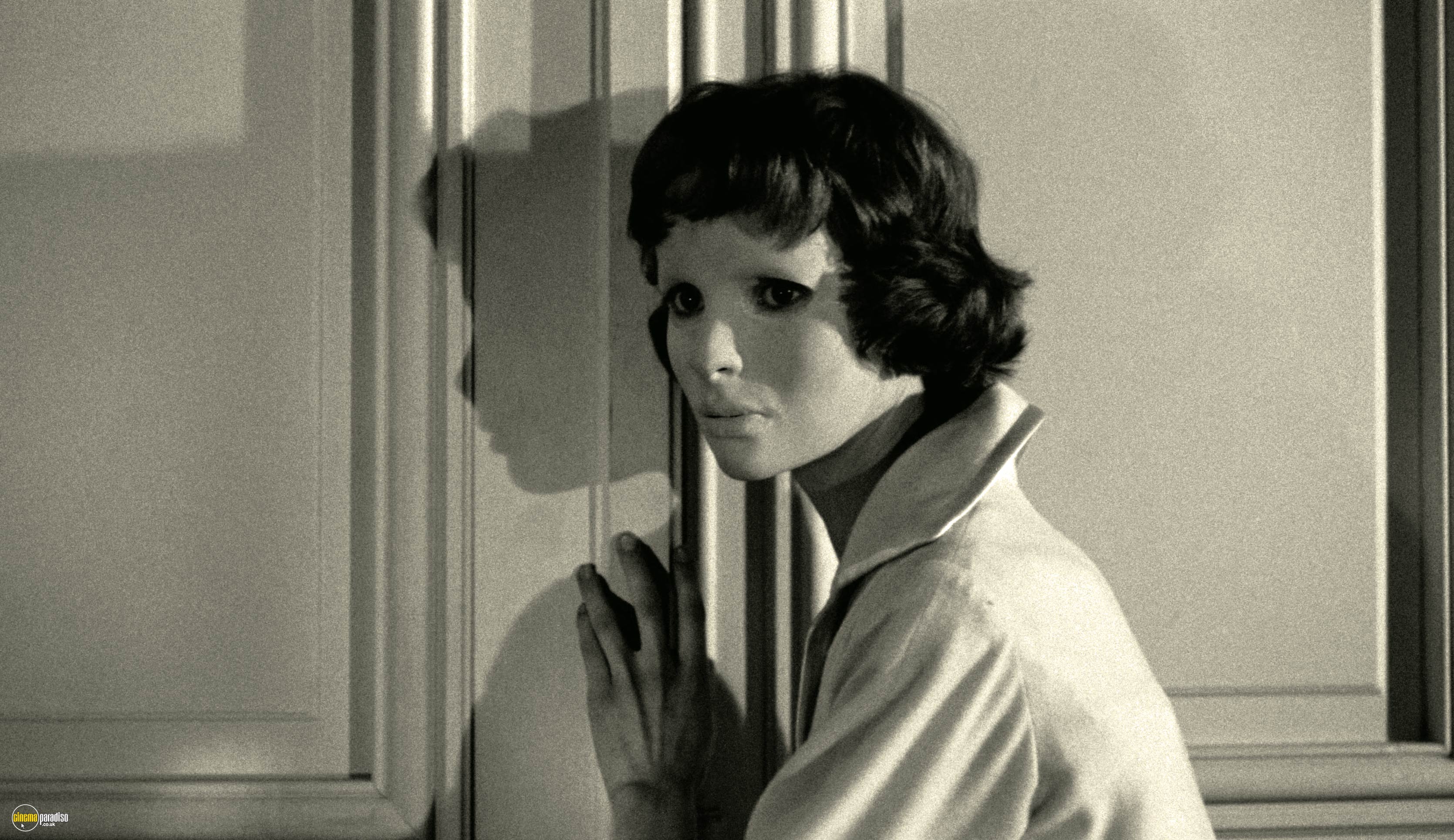 Play trailer1h 30minPlay trailer1h 30min
Play trailer1h 30minPlay trailer1h 30minThere's a marked similarity between the masks worn by Michael Myers and plastic surgeon's daughter Christiane Genessier (Edith Scob) in Georges Franju's masterly adaptation of a bestseller by Jean Redon. Eschewing pure horror, Franju decided to focus on the anguish suffered by a woman detached from her identity and he was abetted by screenwriters Pierre Boileau and Thomas Narcejac - whose novels had inspired Henri-Georges Clouzot's Les Diaboliques (1955) and Alfred Hitchcock's Vertigo (1958) - who reworked the story to place the emphasis on the tormented soul rather than the mad scientist (Pierre Brasseur) and his murderous accomplice (Alida Valli). Eugen Schüfftan's inky photography and Maurice Jarre's quirky score are outstanding, but this is all about Edith Scob's eyes.
- Director:
- Georges Franju
- Cast:
- Pierre Brasseur, Alida Valli, Juliette Mayniel
- Genre:
- Thrillers, Drama, Horror, Classics
- Formats:
-
-
Cul-De-Sac (1966) aka: Ćorsokak
 Play trailer1h 47minPlay trailer1h 47min
Play trailer1h 47minPlay trailer1h 47minDonald Pleasence was no stranger to disconcerting cinema and he excels alongside Françoise Dorléac in Roman Polanski's gnawingly bleak follow-up to Repulsion (1965), which had starred Dorléac's sister, Catherine Deneuve. Having left his wife and factory to set up home in a bastion on a private island, Pleasence finds himself trapped by the tide and escaped American gangster Lionel Stander and his wounded sidekick, Jack MacGowran. Critics have noted the absurdist echoes of Samuel Beckett and Harold Pinter in Polanski and Gérard Brach's screenplay, but there are also similarities to Archie Mayo's The Petrified Forest (1936) and William Wyler's The Desperate Hours (1955), which both starred Humphrey Bogart as a fugitive with nothing left to lose.
- Director:
- Roman Polanski
- Cast:
- Donald Pleasence, Françoise Dorléac, Lionel Stander
- Genre:
- Drama, Comedy, Thrillers, Classics
- Formats:
-
-
The Night Visitor (1971)
 1h 46min1h 46min
1h 46min1h 46minCinema history is strewn with inmates escaping from asylums, but none is forced to go to the same lengths as Salem (Max von Sydow) in Lászlo Benedek's gripping study of extreme vengeance. Henning Kristiansen's vertiginous footage thrillingly reveals how Salem pays back those who framed him for an axe murder. Steve McQueen had been linked with Sam Roecca's short story, 'Salem Came to Supper', in the early 1960s and it was only when Christopher Lee suffered a scheduling conflict and MGM cancelled Fred Zinnemann's take on André Malraux's Man's Fate that Von Sydow was able to reunite with Liv Ullmann after their pairing in Ingmar Bergman's Shame, Hour of the Wolf (both 1968) and The Passion of Anna (1969).
- Director:
- Laslo Benedek
- Cast:
- Max von Sydow, Trevor Howard, Liv Ullmann
- Genre:
- Thrillers
- Formats:
-
-
Black Christmas (1974)
 Play trailer1h 34minPlay trailer1h 34min
Play trailer1h 34minPlay trailer1h 34minCarpenter and Hill clearly knew about 'the babysitter and the man upstairs'. But Roy Moore wasn't content with basing his script for Bob Clark's seminal slasher on the urban legend, as he also incorporated details from a 1943 slaying in Montreal. However, Timothy Bond was hired to switch the action to a college campus, while Clark added the comic business that takes the curse off the carnage. Screen veterans Bette Davis and Edmond O'Brien were sought to play Mrs Mac and Lieutenant Fuller, but the former turned down the offer, while the latter had to be replaced because of Alzheimer's. Listen out for the eerie piano sounds, as composer Carl Zittrer tied knives, forks and combs to the wires.
- Director:
- Bob Clark
- Cast:
- Olivia Hussey, Ann Sweeny, Keir Dullea
- Genre:
- Thrillers, Classics, Horror
- Formats:
-
-
The Omen (1976)
 Play trailer1h 46minPlay trailer1h 46min
Play trailer1h 46minPlay trailer1h 46minOnce heard, it's impossible to forget Sam Loomis's words, 'I met this six year-old child with this blank, pale, emotionless face, and the blackest eyes; the devil's eyes.' However, Damien Thorn is a year younger than Michael Myers when he begins his reign of terror in Richard Donner's chilling take on David Seltzer's bestseller. Indeed, the son (Harvey Spencer Stephens) of the American ambassador to Britain (Gregory Peck) and his wife (Lee Remick) starts acting up at his fifth birthday party and his determination to remain an only child eventually prompts them to take heed of his sinister birthmark. Don Taylor's The Omen II: Damien (1978) duly followed, while John Moore's reboot, The Omen, appeared in 2006.
- Director:
- Richard Donner
- Cast:
- Gregory Peck, Lee Remick, Harvey Stephens
- Genre:
- Horror, Classics
- Formats:
-
-
Suspiria (1977) aka: Dario Argento's Suspiria
 Play trailer1h 34minPlay trailer1h 34min
Play trailer1h 34minPlay trailer1h 34minNumbering Walt Disney's Snow White and the Seven Dwarfs (1937) and Mario Bava's Blood and Black Lace (1964) among its diverse cinematic influences, Dario Argento's giallo impacted upon Halloween's colour scheme and score. Its literary roots lie in an 1845 Thomas De Quincey essay and a selection of fairytales, as Argento and co-scenarist Daria Nicolodi weave a tale of witchcraft around Jessica Harper's arrival to study under Alida Valli at a prestigious German dance academy. With its disconcerting canted angles, jolting cuts and flashes of colour. the film initiated Argento's Three Mothers trilogy, which was completed by Inferno (1980) and The Mother of Tears (2007) before Luca Guadagnino paired Chloë Grace Moretz and Tilda Swinton in a 2018 remake.
- Director:
- Dario Argento
- Cast:
- Jessica Harper, Geoffrey Copleston, Stefania Casini
- Genre:
- Thrillers, Horror, Classics
- Formats:
-
-
Adventures in Babysitting (1987)
 1h 38min1h 38min
1h 38min1h 38minDebra Hill's child-minding experiences clearly left a deep impression, as she returns to them in Chris Columbus's directorial debut. Paramount baled after failing to get Molly Ringwald for the role of Christine Parker, the babysitter whose quiet night in Oak Park turns into a wild ride on the mean streets of Chicago. But, having scripted Joe Dante's Gremlins (1984) and Richard Donner's The Goonies (1985), Columbus knew a good screenplay when he saw one and David Simkins ingeniously and hilariously drags Elisabeth Shue and her young charges into increasingly unlikely situations à la Martin Scorsese's After Hours (1985). Columbus also took cues from the Marx Brothers and Frank Capra's marvellously macabre, Arsenic and Old Lace (1944).
- Director:
- Chris Columbus
- Cast:
- Elisabeth Shue, Maia Brewton, Keith Coogan
- Genre:
- Comedy, Action & Adventure
- Formats:
-
-
Halloween H20: Twenty Years Later (1998) aka: Halloween H20
 Play trailer1h 22minPlay trailer1h 22min
Play trailer1h 22minPlay trailer1h 22minScreenwriter Kevin Williamson was on a roll following Wes Craven's Scream (1996) and Jim Gillespie's I Know What You Did Last Summer (1997) when he devised the story idea for what was going to be called Halloween 7: The Revenge of Laurie Strode. Despite John Carpenter pricing himself out of the director's chair, Jamie Lee Curtis agreed to reprise her iconic role, albeit under the name of Keri Tate after faking Laurie's death to throw Michael Myers off the trail. However, he (in the guise of Chris Durand) manages to track her down to the exclusive Hillcrest Academy, where Laurie is the headmistress and her assistant, Norma Watson, is played by none other than Curtis's mother, Janet Leigh.
- Director:
- Steve Miner
- Cast:
- Jamie Lee Curtis, LisaGay Hamilton, Tom Kane
- Genre:
- Horror, Thrillers, Classics
- Formats:
-
-
Ghosts of War (2020)
 Play trailer1h 35minPlay trailer1h 35min
Play trailer1h 35minPlay trailer1h 35minIf Laurie's wardrobe encounter with Michael scared you, check out the similar scene in Eric Bress's long-awaited follow-up to his debut feature, The Butterfly Effect (2004). This may not be on a par with such Second World War horrors as Ken Wiederhorn's Shock Waves (1976), Jean Rollin and Julian de Laserna's Zombie Lake (1981), David Twohy's Below (2002) or Julus Avery's Overlord (2018). Moreover, it pulls the kind of twist that Brian Griffin described as 'a giant middle finger' in the 'Lois Kills Stewie' episode of Family Guy (1999-). But it's this switcheroo that sweeps us away from the French chateau being guarded by a US Army unit in 1944 to a cupboard in a very different war zone.
- Director:
- Eric Bress
- Cast:
- Brenton Thwaites, Kyle Gallner, Alan Ritchson
- Genre:
- Drama, Thrillers, Action & Adventure, Horror, Sci-Fi & Fantasy
- Formats:
-






























